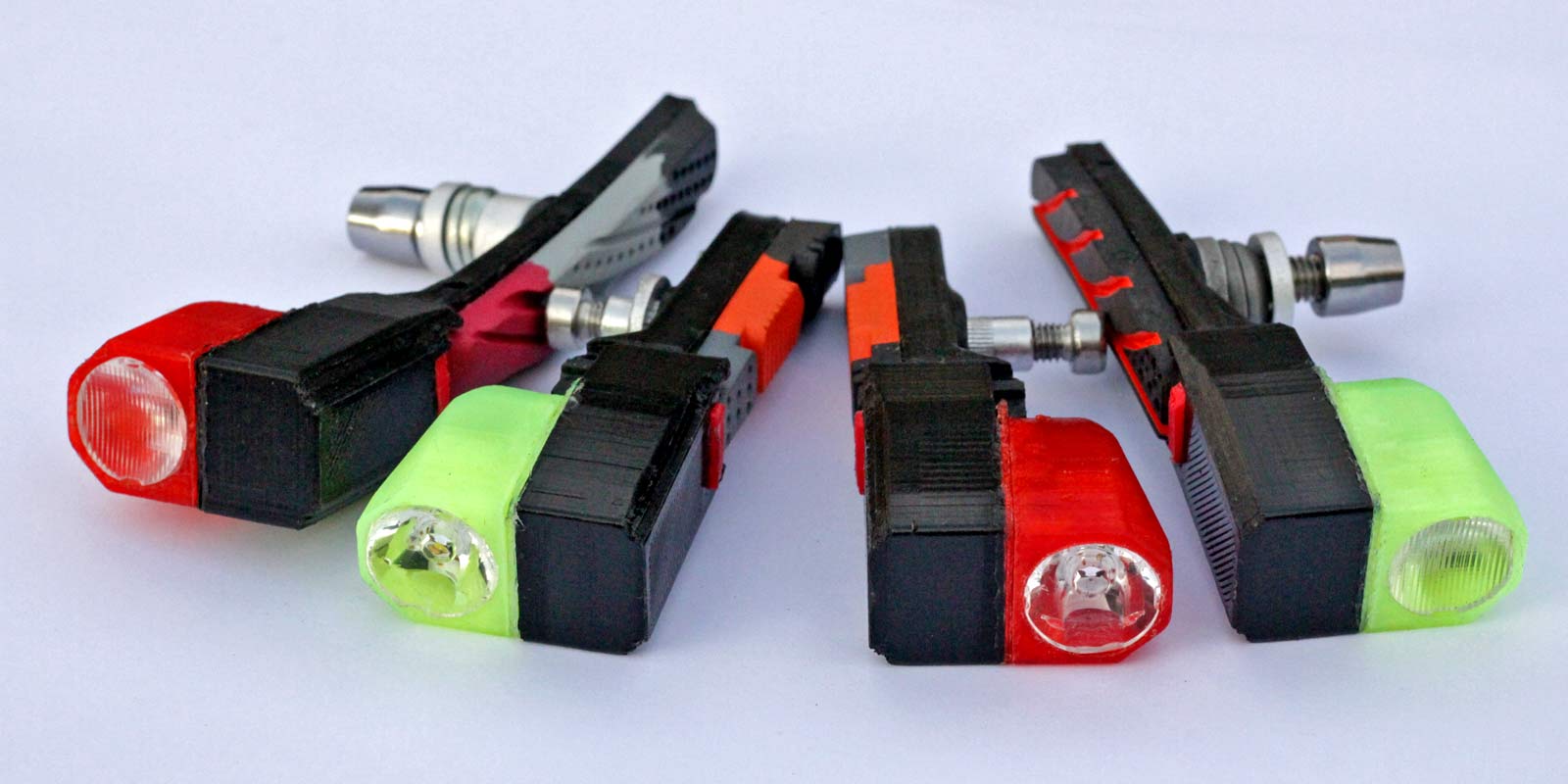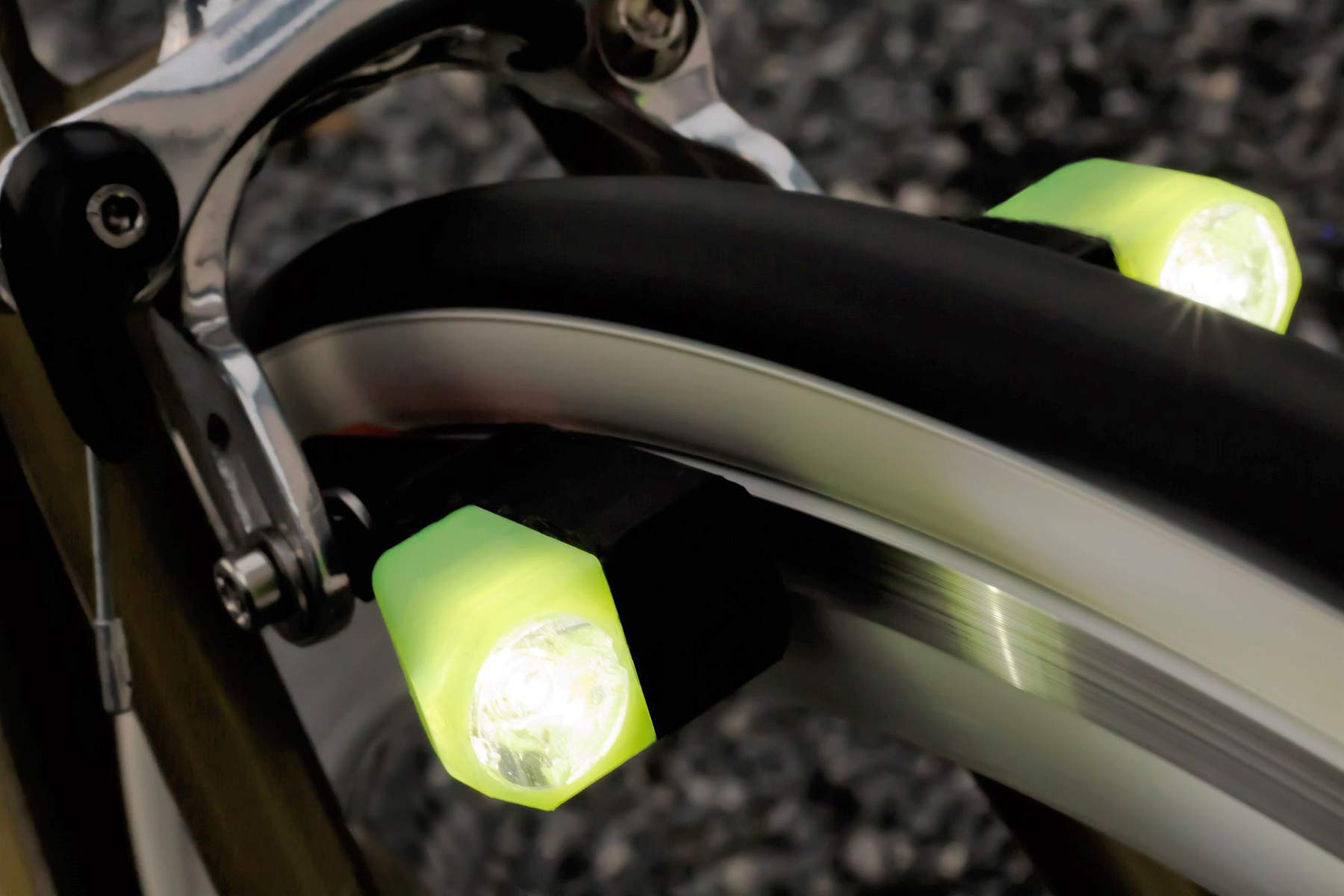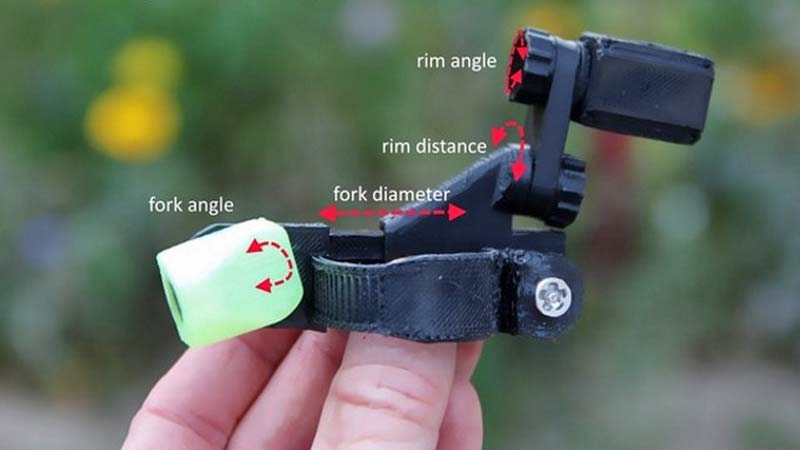Magnic Light Innovations is back with a new, smaller iteration of their seemingly magic self-powered bike lights that use the power of magnets to create a self-contained, no-drag, silent, contactless dynamo. This time by using the latest LEDs, Magnic Microlights tuck all of the electronics into a tiny extension of rim brake pads, or for disc brake bikes into a small strap-on setup. Sure, the energy comes from somewhere (it’s the rider), but it’s less than you think…
Magnic Microlights contactless dynamo LED bike lights
The technology that makes Magnic’s lights is a little hard to grasp. That is, if you don’t have a PhD in magnets (or whatever), since we can’t really see what’s happening inside. But this isn’t vaporware. Magnic has been building these contactless dynamo lights at least since we first saw them seven years ago. In that time, they’ve put 17,000 Magnic lights out on the road. But the new Microlights are smaller, more powerful, better integrated, and likely to surpass those numbers rather quickly.
How do they work?

The science inside remains unchanged. Magnic’s tiny neodymium magnetic generators create magnetic fields that induce eddy currents in conductive materials (your alloy rims. Sorry, it doesn’t work with carbon rims.)
So when the rim spins past the contactless generator, small amounts of energy are created, enough to power the new Cree LED lights to put out plenty of light to illuminate the road and announce your presence. No need to attach magnets to your wheels!
Like all dynamo powered lights, the faster you go the more like they put out (maxing out around 25kph it seems). Interestingly, if you have a generator on either side of the alloy rim, light output increases by more than 10% thanks to interaction of the complimentary eddy currents – another reason to buy paired setups. Also, the rear rim brake lights effectively work as brake indicators too. As you brake the generators get closer to the rim, increasing energy generation, and brightening the light output. After you stop moving, the energy generated powers your lights for an additional 4 minutes at a standstill.
How much energy does it take?
While there is no physical contact, and no mechanical drag since nothing touches, the energy doesn’t materialize out of thin air. The powerful little magnets inside the Magnic Microlights does work by effectively slowing down your spinning alloy wheels. Magnic equates it to an extra 5% of energy expenditure. That means for every 20 chocolate bars you eat to fuel your next ride with Microlights on (something like a 500km ride), you’ll need to eat 1 extra chocolate bar. Eating a single chocolate bar is better that throwing a wasted battery in the landfill, right?
So how do you get Magnic Microlights on your bike?
Magnic has two versions of their latest Microlights which were overwhelmingly funded in a Kickstarter campaign late in 2018 (which we missed). The cleanest solution are sets of front or rear brake shoes (for replaceable brake pads, road or MTB) that build the generators and lights in. One single front light will cost you 33€ to pre-order, or a pair for 64€. One single rear costs 38€ or 74€ for the pair. What you get is an alloy set of brake shoes with the Magnic Microlight tech integrated in one or both pad holders. 129€ gets you a full set of front and rear pairs.
The second version called Microlight Vega (taking its name from a constellation), is a more universal fit setup that works with disc brakes (or rim brakes if the brake posts aren’t in the way.)
36€ for the white front, 39€ for the red rear, or 72€ for a front & rear set. The Wega lights attach with a clamp around the fork blade or seatstay and are adjustable to align the generator close to the rim, and the light to point in the desired direction. The Vega lights are intended to be used on a single side, unlike the paired brake pad system design.
Availability?
All of this is for pre-order now, as Magnic funded their Microlight project through a crowdsourcing campaign in December 2018. Anticipated deliver is July 2019, and Magnic has been producing these type of lights for several years, so it’s likely a matter of when they hit their delivery target, not if.






